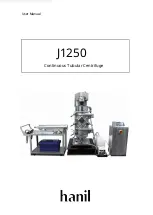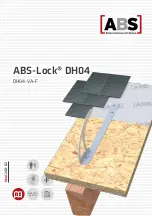
Copyright by Pister Kugelhähne | Vogesenstraße 37 | D-76461 Muggensturm | Stand:10/2017
1
Service and maintenance manual
Hand-operated PISTER Multicoupler PMK®
1. General
The service and maintenance manual describes possible failure
causes at leakages and the replacement of seals at the PISTER Mul-
ticoupler PMK.
The hand-operated PISTER Multicoupler is abbreviated in the service
and maintenance manual with PMK, the hydraulic locking device with
HV. The service and maintenance manual has to be read carefully and
has to be retained. The instructions of the general operating manual
(document no. 75-007-078) have to be followed, especially the safety-
instructions.
For non-observance of the service and maintenance manual, the ma-
nufacturer assumes no liability and warranty. Qualified personnel are
necessary to the application of this manual. It is the responsibility of
the operator or planner to ensure that national regulations for accident
prevention such as local safety regulations of the operating company
are not replaced by this manual, they should rather be considered with
priority. The manufacturer maintains all rights for technical changes
and improvements at any time.
2. Leakage of multicoupler system
Hint
A small oil film on the couplings after the discon
-
nection is normal and is not a leakage. If larger
leakages are visible, check which coupling is
leaky. Longer operating time increases the leaka-
ge of the coupling plugs.
If the coupling does leak replace the seals and the
couplings are in new condition.
Seals can only be
replaced at the coupling plug type 2. At the PMK
with coupling type 1 the defective female cou-
pling or plug has to be replaced!
Attention
Switch off motor, depressurize system!
Disconnect PMK system
3. Leakage at female coupling
Figure 1: troubleshooting at female coupling
Check the female coupling (figure 1):
•
Prepare oil container to collect the leak oil
•
Visual control of the couplings. Is there a leakage between the
dust cover 65 and the valve 66, there is outer leakage
•
Seal ring in valve 66 is damaged or a particle is trapped
•
Push down the dust cover 65 with a screwdriver. While pushing
down the dust cover 65 oil is running out
•
Remove the foreign particle
Replace the female coupling if the problem cannot be solved.
4. Leakage coupling plug
Figure 2: troubleshooting at plug
Hint
If the coupling plug is leaky the leak oil spreads
in the front area of the female coupling, please
see arrow in figure 3. The leaky coupling plug
splatters the oil when connected in this spring
chamber of the female coupling. At disconnected
condition there are oil drops recognizable at the
female coupling.
Figure 3: oil-filled area in the female coupling
Course of action:
•
Localise the leaky coupling plug
•
Remove the oil and grease from the female couplings (e.g. with
brake cleaner)
•
Connect PMK
•
Pressurise all lines
•
Disconnect immediately after releasing pressure
•
Check couplings (oil film at the female coupling indicates a leaky
coupling plug)
•
Replace the seal rings, please see figure 5
5. Replacing the seal rings at the coupling plugs
Attention
Switch off motor, depressurize system!
Disconnect PMK system
Hint
If the valve 14 of the coupling plug can‘t be pushed in,
there is residual pressure in the hydraulic cycle. Re-
lease pressure in the system!
Figure 4: Assembly coupling plug




















